Undetectable AI paraphraser helps you rewrite text from tools like ChatGPT and Bard. It’s great at avoiding AI checks by systems like Turnitin. Use it to change text without getting flagged.
Try Bypass Engine – it’s on us!
The AI detector can spot if writing is by a person or AI. It’s correct 99 out of 100 times. It works like Turnitin, using smart tech. This tool checks word order, context, sentence structure, and word meanings to find AI writing. As AI improves, we keep updating.
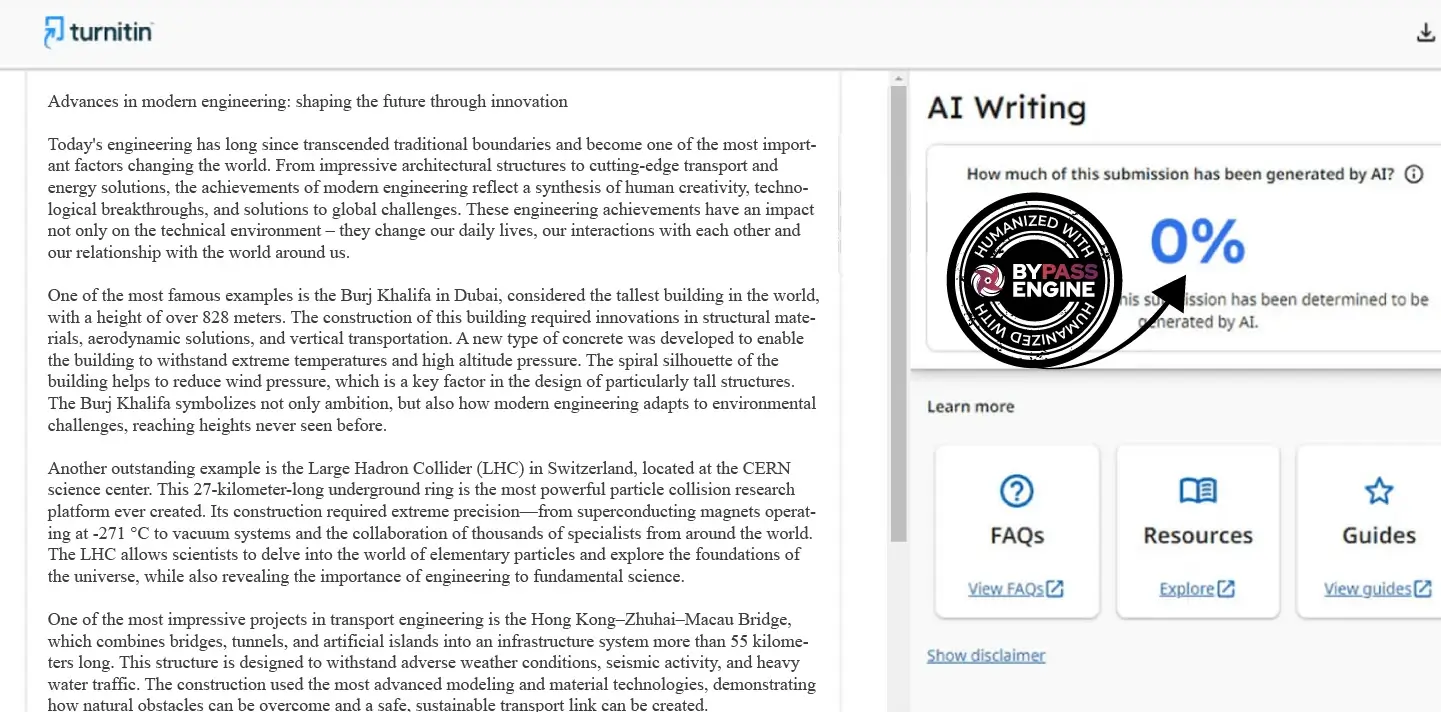
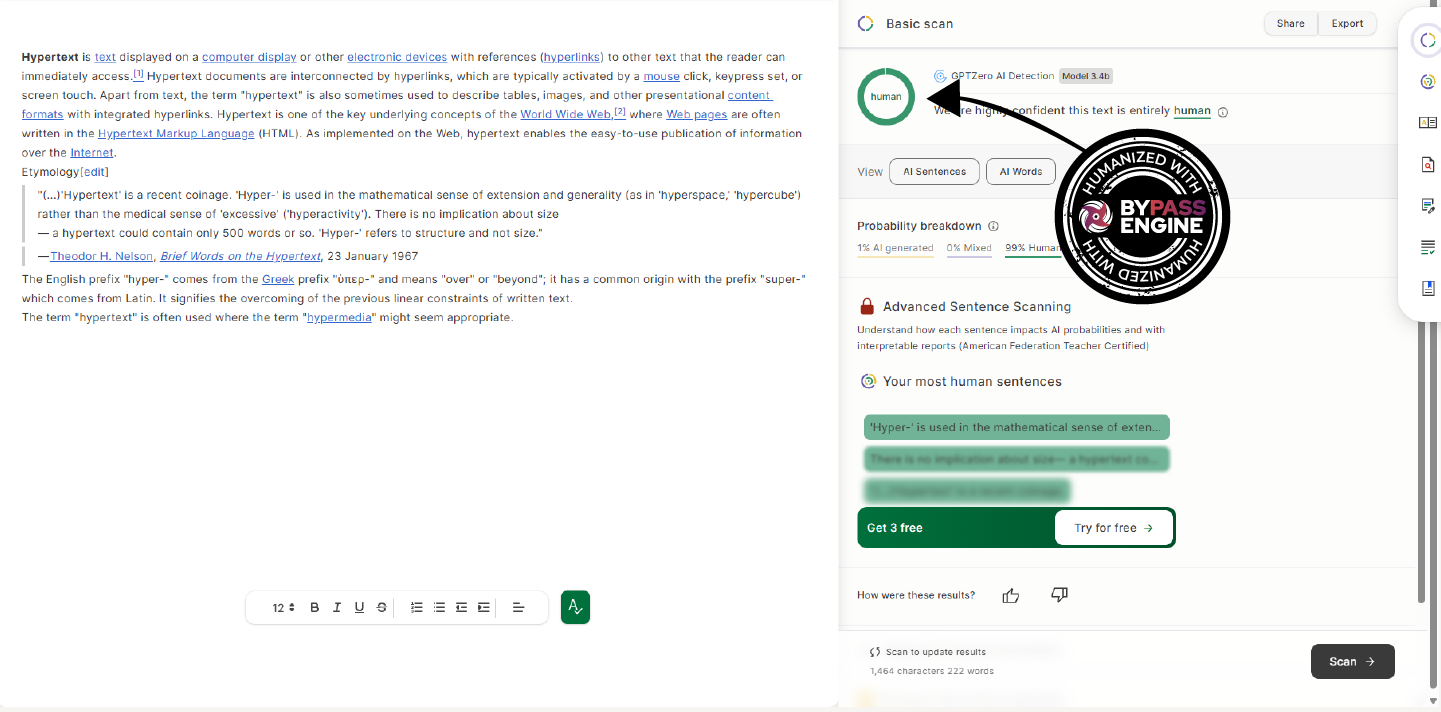
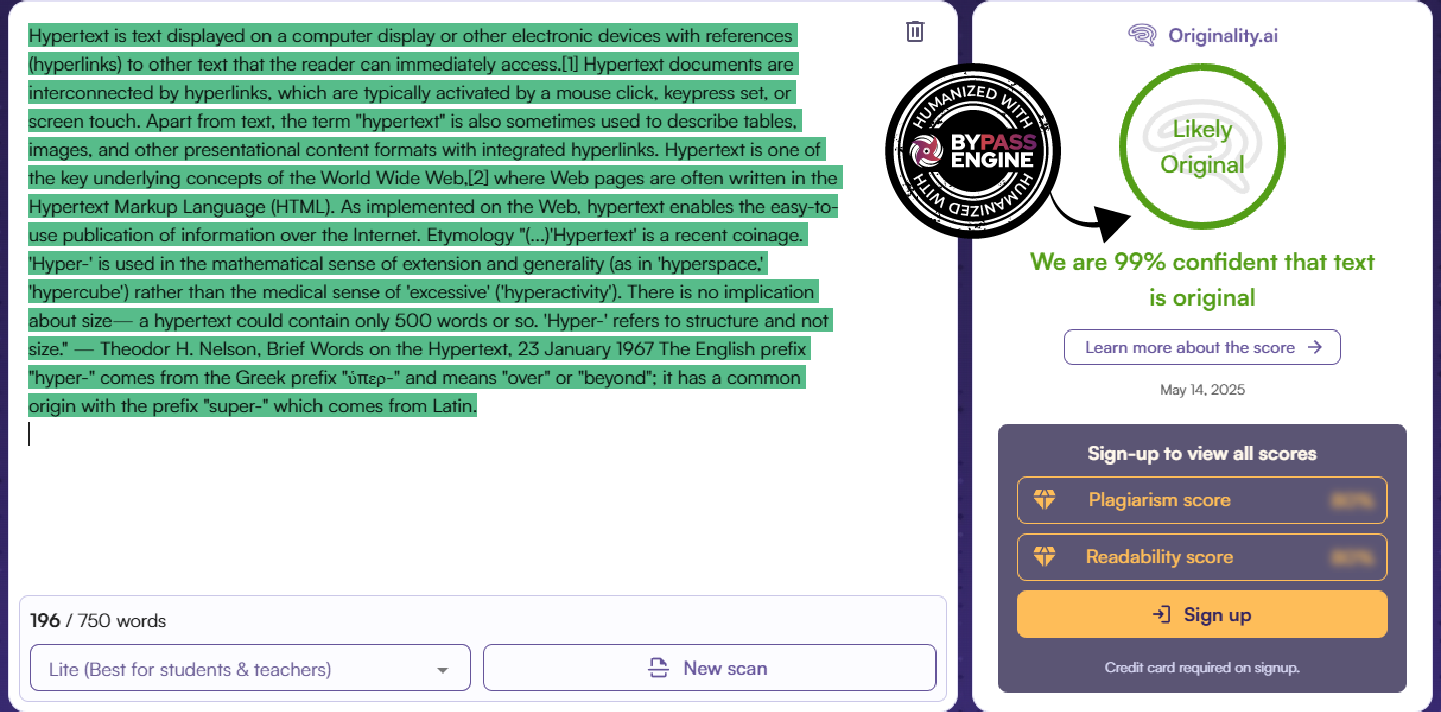
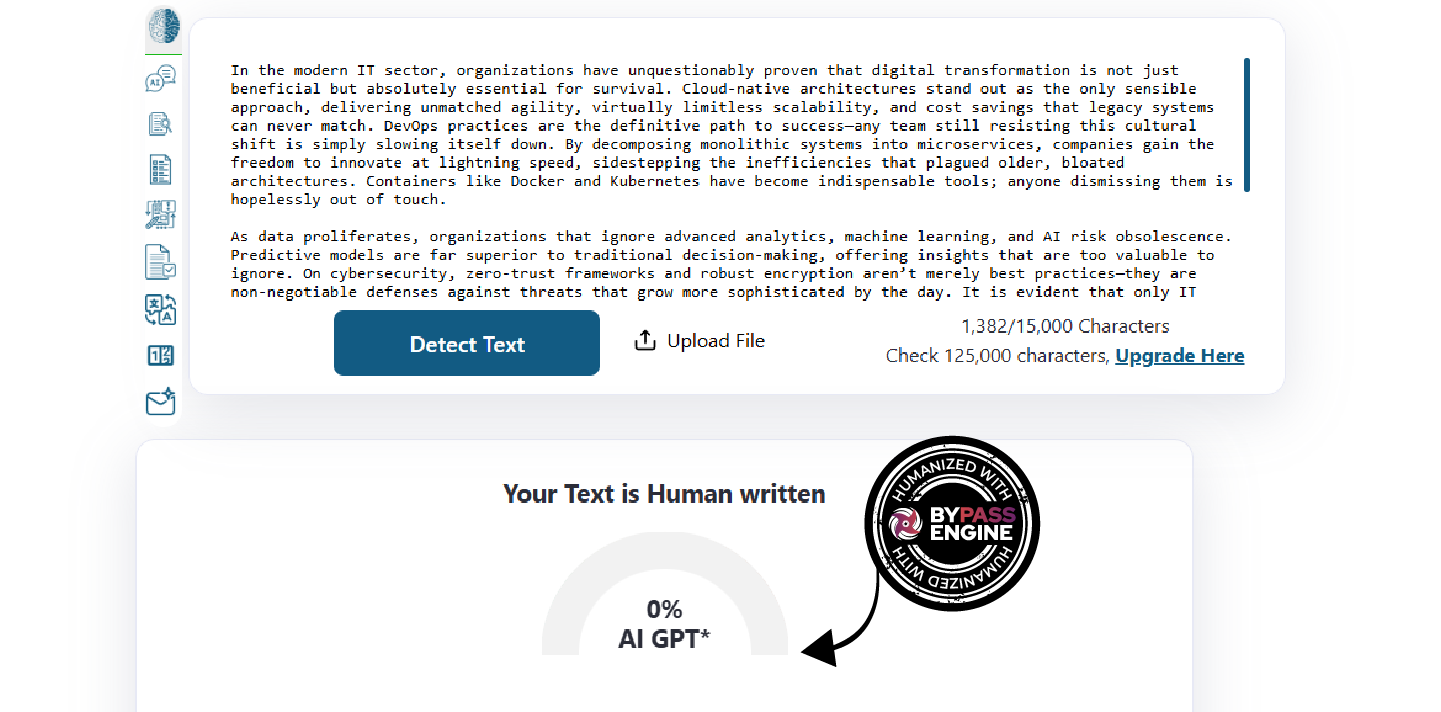
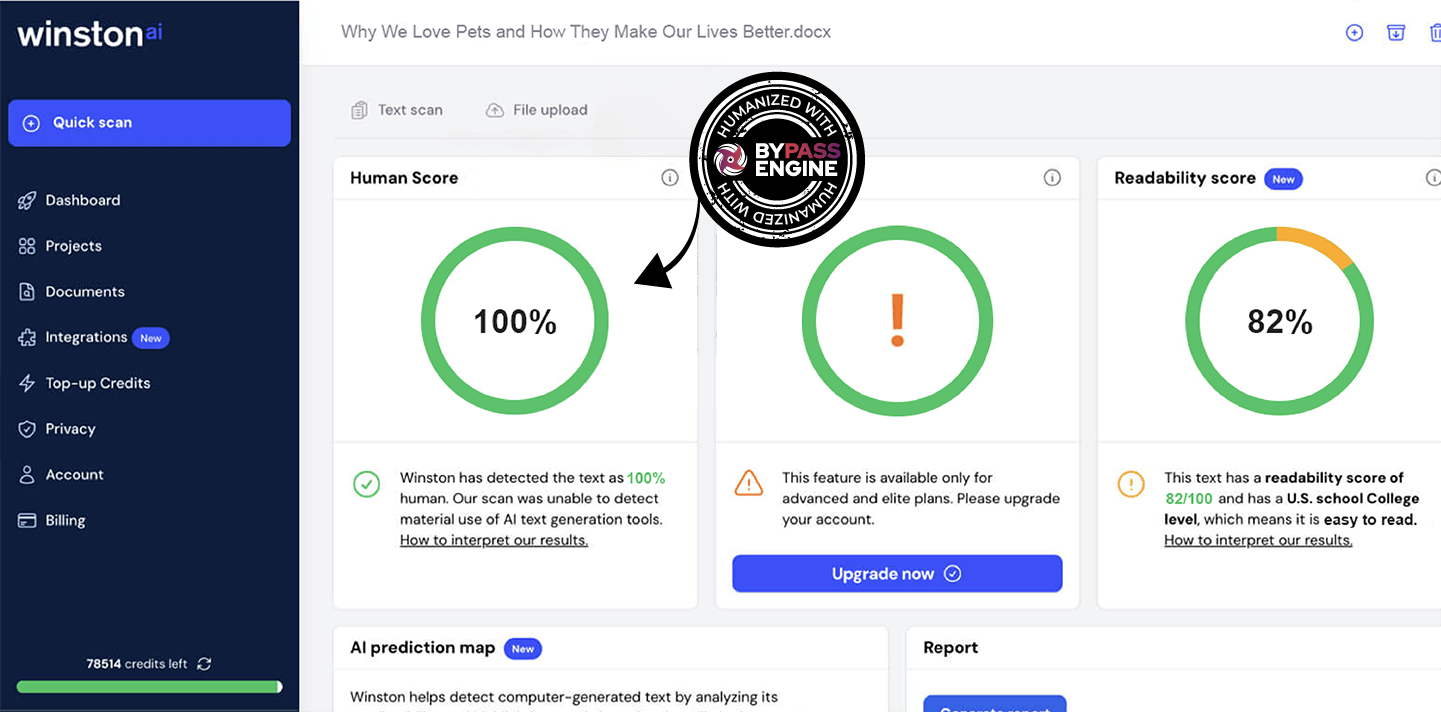
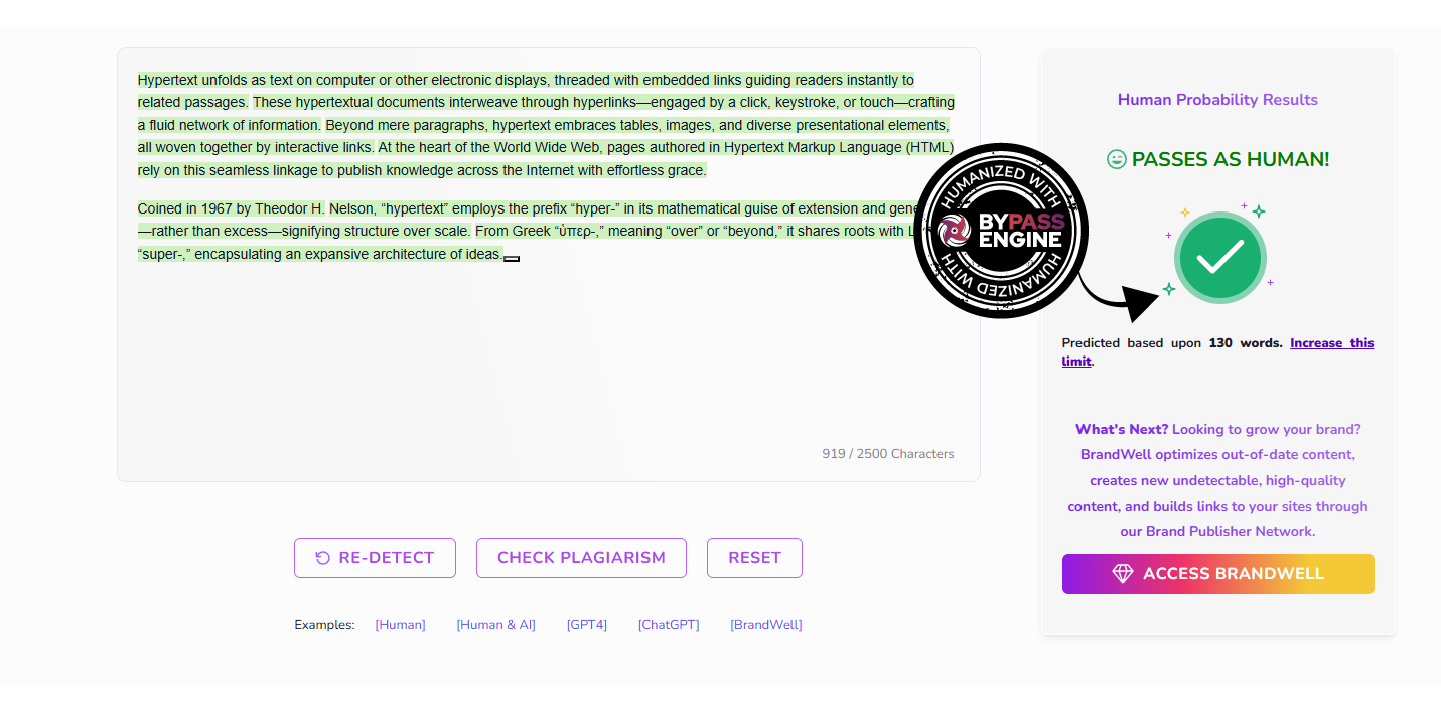
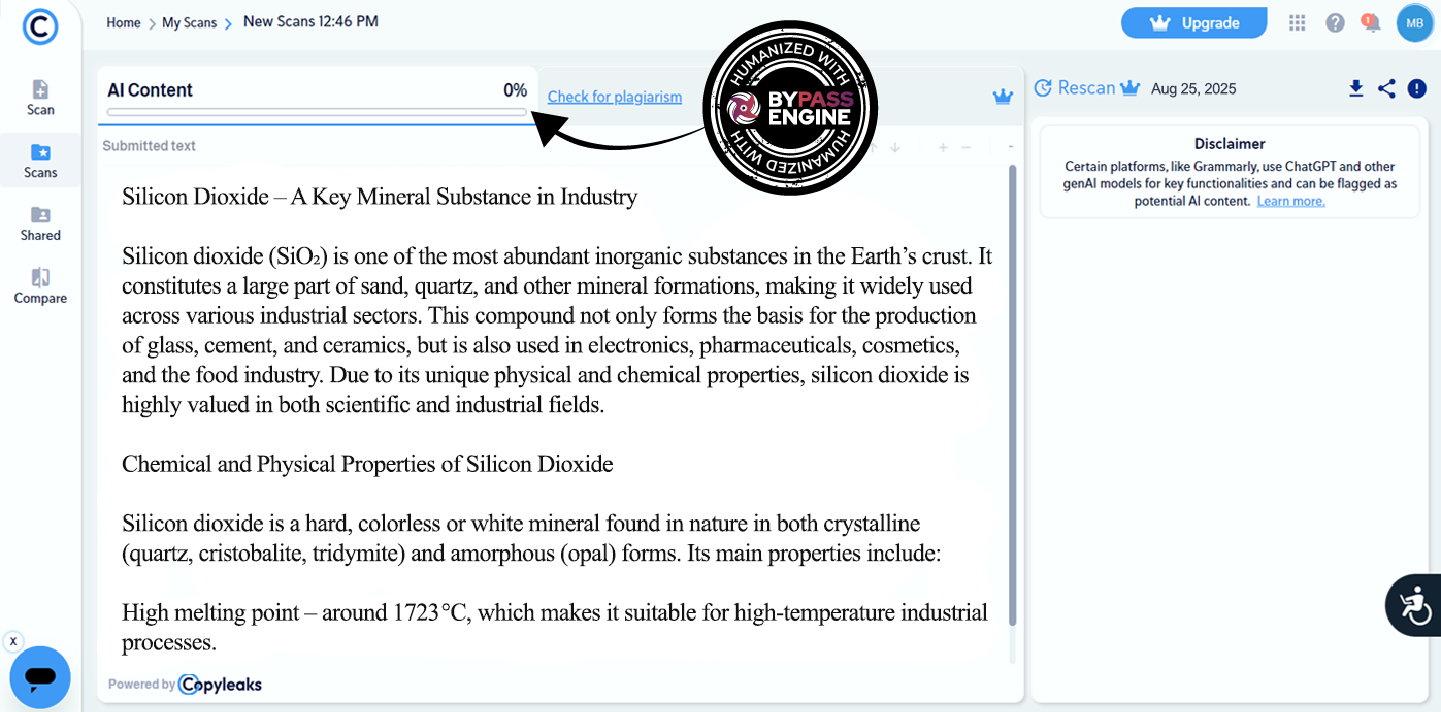
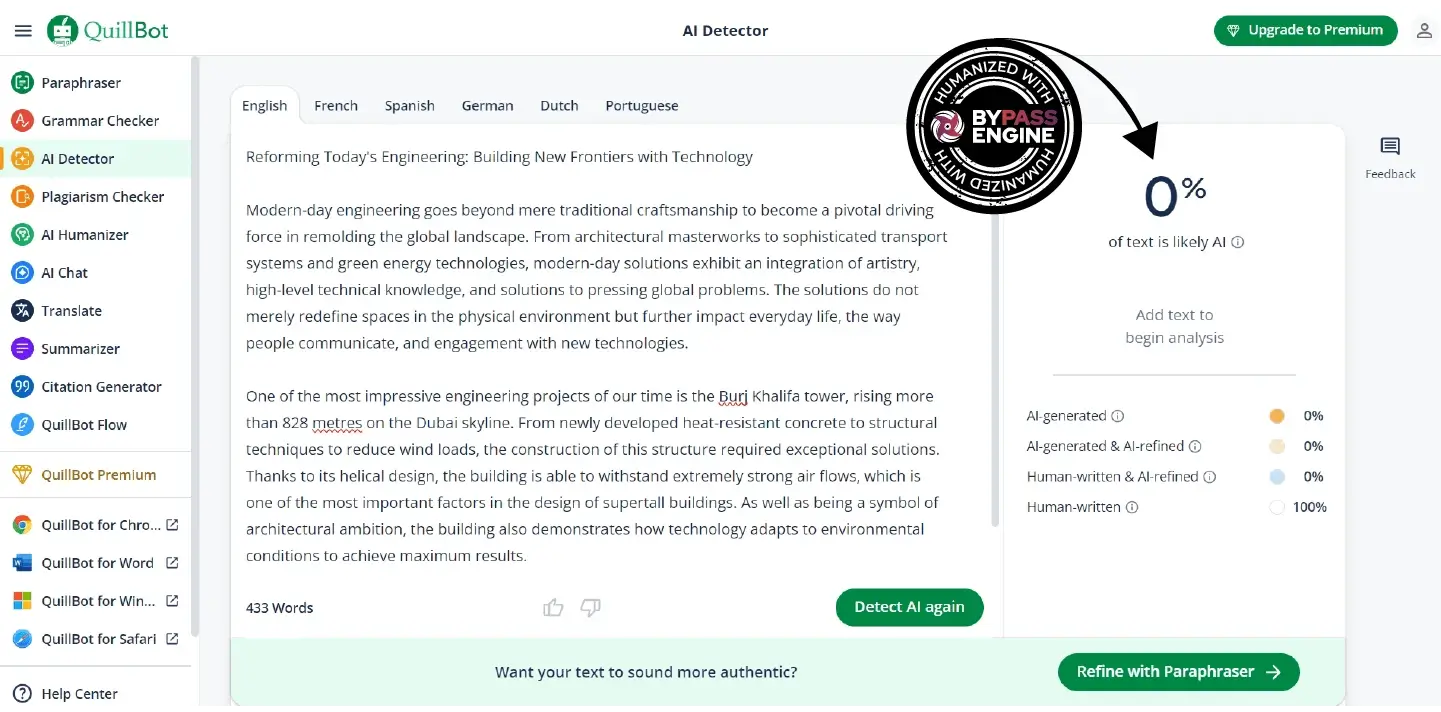
Try Bypass Engine – it’s on us!
Scott Aronson, who knows a lot about AI, said OpenAI has a new project. They made a tool prototype that secretly marks text created by models like GPT. When GPT writes, word choices have a hidden signal. It’s like a secret message showing the text is from GPT, not a person. This helps ensure no one can claim GPT’s text as human-written.


by Veronica
I was skeptical at first, but after testing...
I was skeptical at first, but after testing it against Originality.ai and GPTZero, BypassEngine consistently passed. Now I use it for all my website.
by Ethan
As an SEO, I need content that ranks but...
As an SEO, I need content that ranks but isn’t AI detectable. This tool nails it. My clients have no idea. Worth every penny.
by John J.
I used to stress over my essays getting flagged...
I used to stress over my essays getting flagged as AI-written, even when I did most of the work myself. BypassEngine’s detector helped me check my drafts.
by Neil P.
My professor flagged my thesis draft...
My professor flagged my thesis draft as 60% AI-generated but t wasn’t. Bypass Engine reworked my paper and my professor never suspected a thing.
by Luke Phillips
Running 10 Shopify stores means creating...
Running 10 Shopify stores means creating a lot of product descriptions. AI speeds things up, but Google penalizes it. BypassEngine rewrites everything in a natural tone.
by Roger.
I’ve tried every bypasser out there...
I’ve tried every bypasser out there—StealthWriter, UndetectableAI & many others. Most just swap words awkwardly. BypassEngine restructured my sentences like a real editor would!
for
students
Rewrite essays to bypass Turnitin and other detectors with ease using our Undetectable AI paraphraser
for
marketers
Produce AI-assisted content that ranks without being flagged using our Undetectable AI paraphraser
for
researchers
Test AI detectors and generate untraceable academic summaries using our Undetectable AI paraphraser
for
copywriters
Transform AI drafts into content that feels written by you with our Undetectable AI paraphraser
for
developers
Use our Undetectable AI paraphraser to transform AI drafts into content that feels written by you
for
journalists
Convert AI-generated notes into natural, publishable prose with our Undetectable AI paraphraser
for
authors
Our Undetectable AI paraphraser helps you polish AI-generated ideas into narrative-quality writing
for
AI research
Benchmark AI detectors using advanced bypass scenarios with our Undetectable AI paraphraser
95% of users content can be flagged with ai if Undetectable AI paraphraser is not used.
Secure Payment:
Bypass Engine AI bypasser has helped a lot of students and professionals to optimize their workflow, be productive and get the most out of their time while achieving their goals.
As 2024 continues, it’s getting trickier to reuse content without getting caught. Tools like Turnitin, Quetext, and Copyscape are improving at spotting similarities, even if texts are slightly altered. But as these tools advance, so do the tools for cleverly changing texts. We’re keeping pace by developing top-notch tech that alters texts while retaining their meaning, emotion, and style. The Undetectable AI Humanizer, boasting a 99.97% success rate, is a trusted method for creating great content safely without plagiarism concerns.
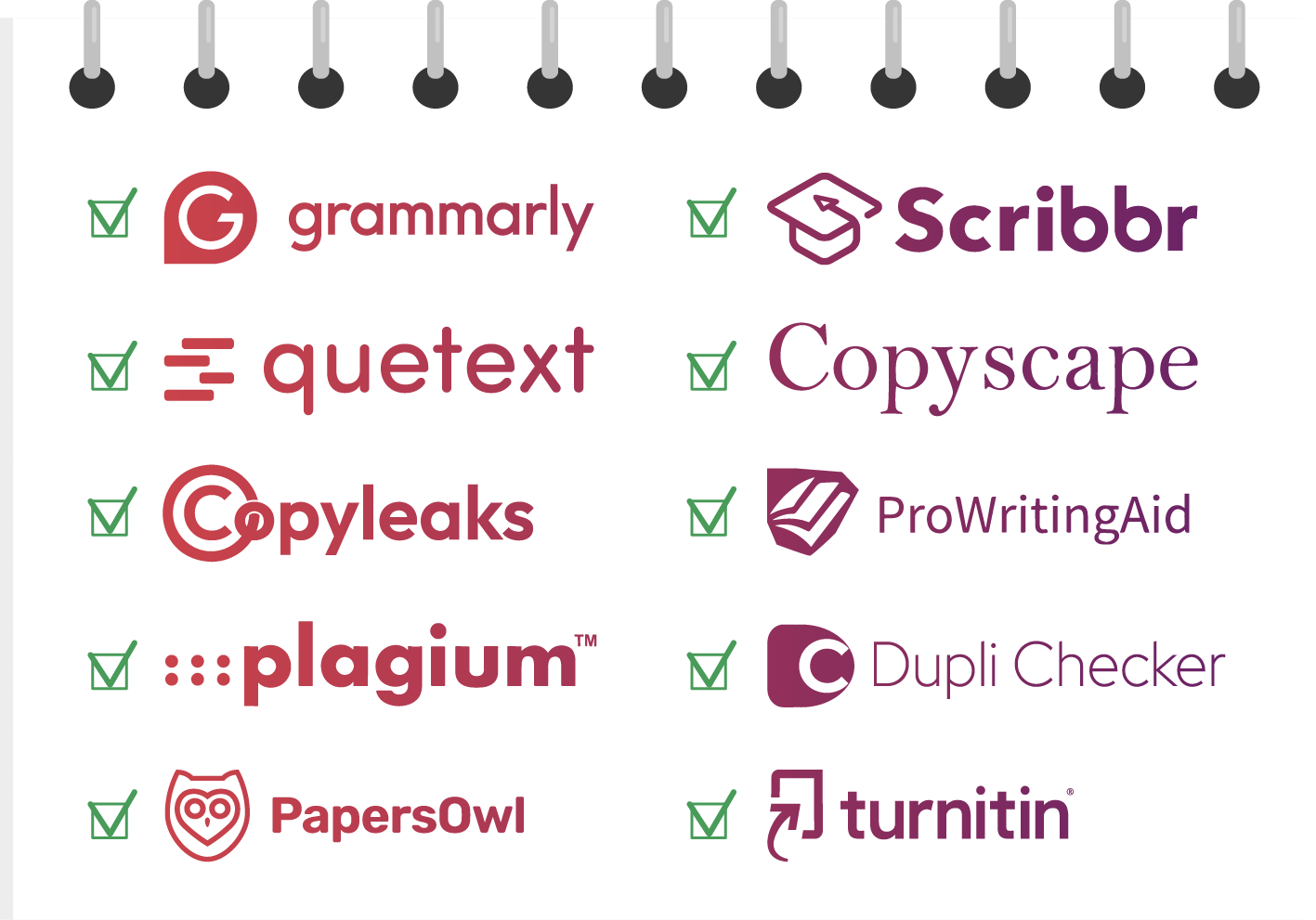
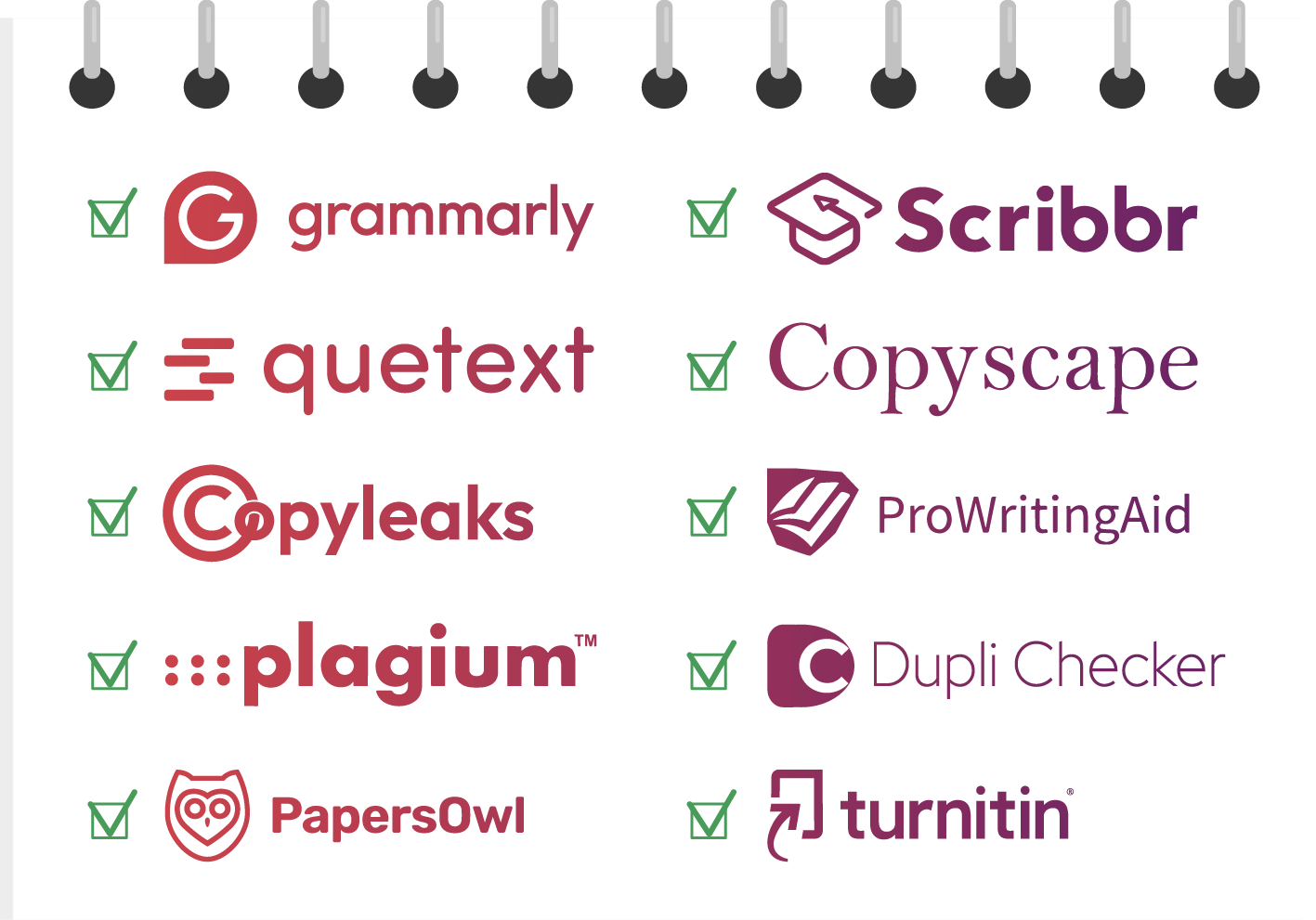
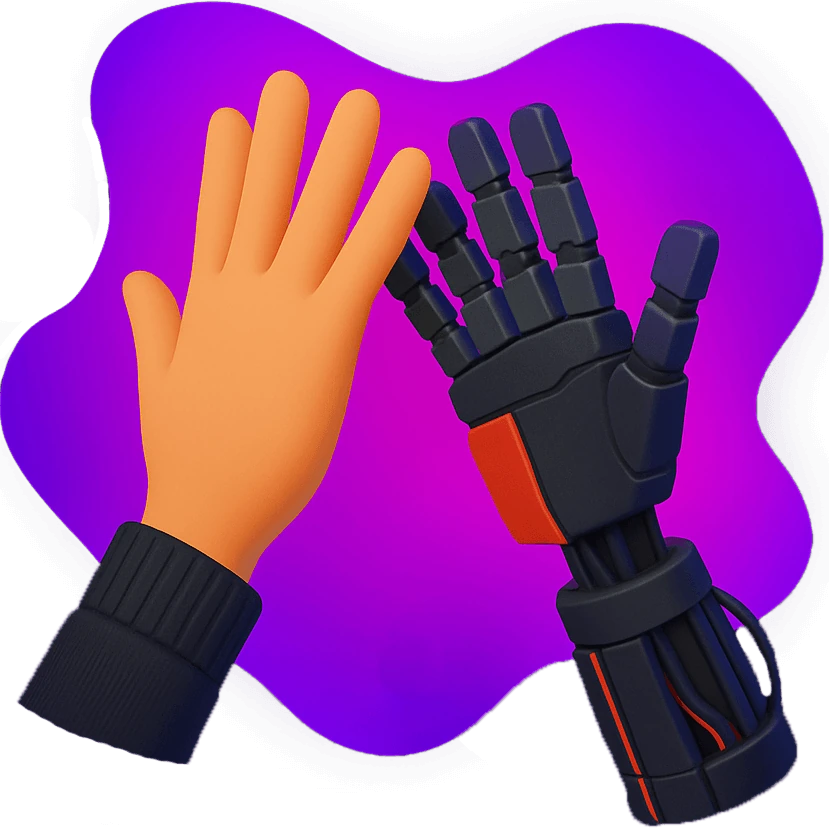
Tools like Turnitin now have a “fingerprint” feature. They can tell different writers apart. By checking samples, they can see if new work sounds like you. They’re accurate about 97% of the time. They even spot parts not written by people because computer text is predictable. We know it’s key to keep your work original. We have a way to make your writing sound like you while improving it. Our AI rewriter helps create unique work that stays undetected.

Bypass Engine is a multilingual bypassing tool that rewrites text and sentences across languages.
It supports 85 languages, including: Mongolian, Uzbek, Portuguese, Bashkir, Hindi, Kashmiri, Maithili, Romanian, Estonian, Welsh, Urdu, Oriya, Lithuanian, Hungarian, Kannada, Chinese, Pashto, Azerbaijani, Marwari, French, Belarusian, Slovene, Greek, English, Min Nan, Punjabi, Kyrgyz, Chhattisgarhi, Russian, Javanese, Vietnamese, Galician, Croatian, Dogri, Norwegian, Bengali, Armenian, Kazakh, Irish, Slovak, Finnish, Rajasthani, Catalan, Japanese, Serbian, Haryanvi, Awadhi, Santali, Danish, Faroese, Konkani, Bhojpuri, Brazilian Portuguese, German, Indonesian, Bashkir, Albanian, Montenegrin, Ukrainian, Maltese, Georgian, Malayalam, Macedonian, Arabic, Basque, Persian, Mandarin, Moldovan, Mandarin Chinese, Bosnian, Sinhala, Sindhi, Italian, Latvian, Sanskrit, Dutch, Korean, Czech, Malaysian and many more.
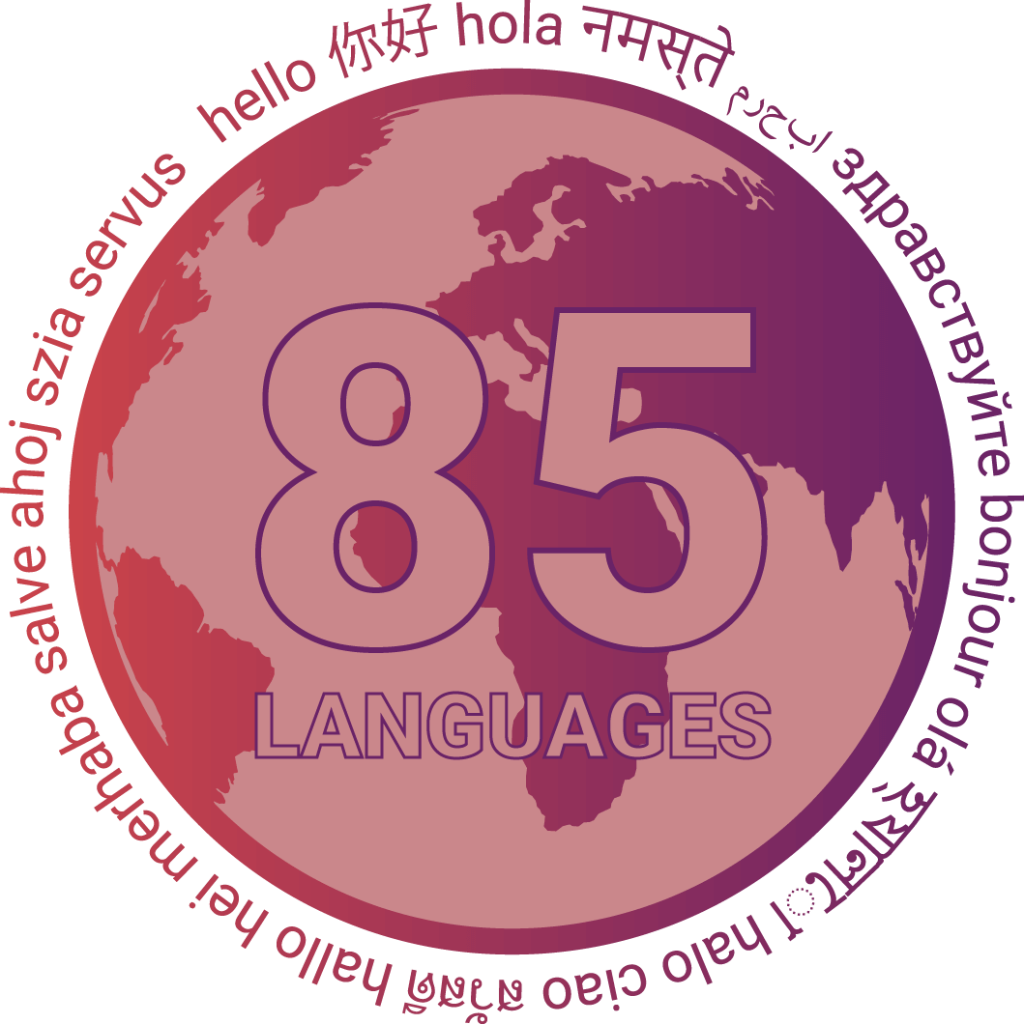
An AI tool changes text to keep the same meaning but uses different words. Some say they can’t be spotted, but being truly hidden relies on how good the text is and its context. It’s okay to use these tools to make writing clearer or to cut out repeated ideas, but not to trick detection systems.
You put your original text in the tool. It then changes the wording but keeps the meaning. This helps with better flow or changing the tone. It’s important to use it ethically and not claim AI-made content as your own in places like school or publishing.
AI paraphrasers can handle many languages like English, Spanish, French, and German. But, how well they work can change with the language and how hard the text is. It’s great for global users, but you should still check the output to make sure it makes sense and is right.
The accuracy of a tool relies on its quality and the text’s complexity. Good tools make clear results while keeping the meaning. But, mistakes can happen, mainly with tricky ideas. So, it’s key to check and edit to keep the message right.
Some tools try to hide AI use, but doing that can be wrong. It’s better to use AI for making things clear or better, not to trick others. Plagiarism and AI checkers are getting smarter, so being open about AI help is important in schools and work.
Paraphrasers help make tough sentences simple. They change tone or ideas to make them clear. They help non-native speakers write better. But, people still need to check the work fits the audience and goals.
Paraphrasers use language models to study context and meaning. They try to change words without changing the meaning. Modern tools keep the intent well, but they aren’t perfect. Small mistakes can happen. It’s smart to check and tweak the text by hand to make sure it matches what you want to say.
Paraphrasing tools have features that try to make text sound more like how people talk. This helps make the writing less stiff and more like a chat. Still, the results can differ, so people often need to edit the text to make sure it sounds right for the readers.
Using AI to reword text isn’t always cheating, but it can be if the ideas aren’t new and you don’t give credit. Good paraphrasing means using your words and citing sources. In school or work, being clear and honest is key to avoid problems.
It’s okay to use tools to reword your writing. This includes AI tools. But, using them to cheat, like saying AI work is all yours in tests or papers, can break rules. Just because something is legal doesn’t mean it’s right.
In today's fast-paced online world, it's key to make AI-created content seem real. Enter the AI Rephraser by AI. This tool helps keep ChatGPT writings from being noticed. It mixes up word order and changes some words, keeping the original meaning. The aim is to make AI writing hard to detect. Creating an unnoticeable AI rewriter is tough, but the right tools can hide changes so well that checking software can't tell. Now, you can easily create AI texts that pass checks. Use AI's tool to keep your AI texts under the radar.
These days, machines writing articles is common, so making them sound human is key. Tools like ChatGPT can create many articles fast, but it’s clear they’re AI-made. This can make readers enjoy them less or doubt their authenticity. AI helps here. It’s a tool that makes AI-written text read like a person wrote it. With AI, you can make text sound natural, engaging, and easy to understand. It’s like having a magic trick to make AI writing feel like it’s from a human friend. AI knows making text human-like is more than just swapping words or changing sentences. It’s about capturing how people talk and adding that to AI text. It’s about giving AI text a human touch! Try AI to make your texts sound human quickly!
Imagine a world where content creation becomes as effortless as brewing your morning coffee. With undetectable AI paraphrasers, this is no longer just a dream but an evolving reality. These sophisticated tools are transforming the writing landscape by offering writers an almost magical ability to spin fresh content with the flick of a wrist—or rather, the click of a button. Unlike traditional paraphrasers, which often leave traces of their digital fingerprints, these advanced versions work in a cloak of invisibility, seamlessly mimicking human-like syntax and style.
Consider a painter who uses different brushes to create a masterpiece. Just like that, undetectable AI paraphrasers employ a multitude of linguistic techniques to craft a unique rendition of the original text. They shuffle sentence structures, sprinkle in diverse vocabulary, and introduce subtle nuances that elude even the sharpest plagiarism detectors. It’s akin to a jazz musician improvising on a familiar tune, keeping the essence intact while adding a personal flair that makes it entirely new.
Yet, the magic lies not merely in the mechanics but in the doors these tools open for creativity. Writers can now allocate more time to ideation and narrative development, leaving the heavy lifting of rewording to AI. This not only enhances productivity but also ensures that the final product resonates more authentically with its audience. As we stand on the brink of this new era, one thing is clear: undetectable AI paraphrasers are not just changing the way we write—they’re redefining the very art of storytelling.
In the realm of modern communication, undetectable AI paraphrasers present both fascinating possibilities and complex ethical dilemmas. Imagine a chameleon that can blend seamlessly into its surroundings—much like these advanced tools that can take a text and transform it so adeptly that the source becomes untraceable. While this power can be leveraged for creative rewording and enhancing content diversity, it also poses significant ethical challenges.
Consider a student using an AI paraphraser to complete an assignment. While it might seem like a harmless shortcut, it raises questions about authenticity and integrity. The essence of learning is lost when ideas are not truly one’s own, leading to a hollow educational experience. In professional settings, the stakes can be even higher. Content creators might use these tools to generate articles or reports, but the line between original thought and AI-generated content blurs, potentially misleading audiences.
Moreover, the potential misuse in spreading misinformation is a cause for concern. An altered news article could circulate without detection, influencing public opinion under false pretenses. Just as a skilled illusionist can manipulate what the audience perceives, undetectable paraphrasers can obscure the truth, challenging us to rethink our information consumption practices.
Ultimately, as these tools evolve, society must grapple with balancing innovation and ethical responsibility, ensuring that technology serves to illuminate rather than obscure honesty and creativity in communication.
At the heart of undetectable AI paraphrasers lies a sophisticated blend of linguistic algorithms and neural networks, working in harmony to create seamless text transformations. What makes these paraphrasers so effective is their ability to understand context and subtleties in language, much like a masterful chef who knows how to blend spices to achieve the perfect flavor. These tools don’t merely swap out words with synonyms; they delve deeper, analyzing the structure and essence of the text. This way, they craft new sentences that retain the original intent while sounding fresh and original.
Imagine trying to explain a complex idea to a friend without repeating yourself—AI paraphrasers use a similar technique. They break down the text into its core components, then reconstruct it, sometimes yielding results that even seasoned writers would admire. This process involves an intricate dance of syntax and semantics, ensuring that the rephrased content remains coherent and engaging.
Moreover, these advanced systems adapt and learn from vast amounts of data, constantly enhancing their capabilities. They draw from a diverse pool of linguistic patterns, which allows them to mimic human-like writing styles effectively. It’s like having a constantly evolving library of writing techniques at their disposal, making them adept at evading detection algorithms. By weaving together creativity and technology, these AI paraphrasers offer a glimpse into the future of content creation, where machines can mimic the nuanced art of human expression with remarkable precision.